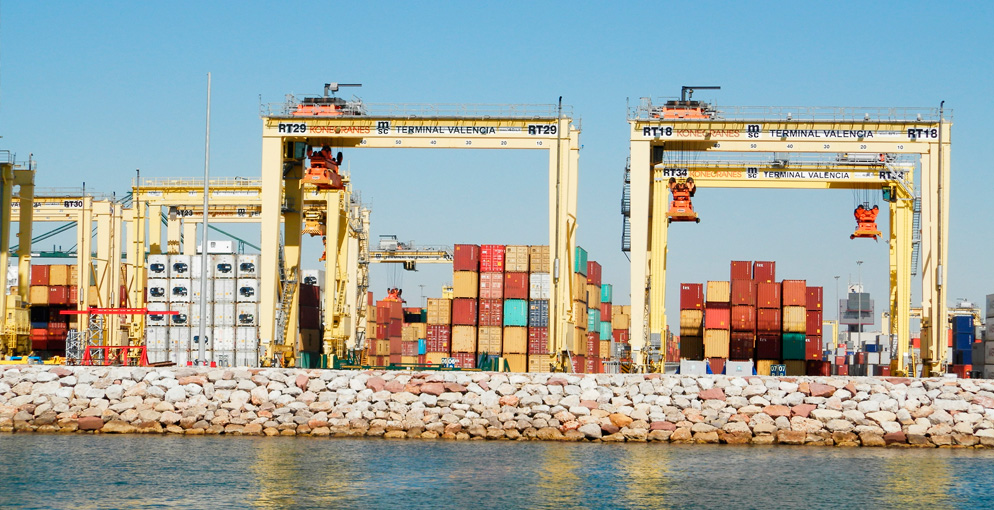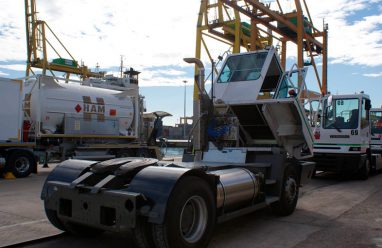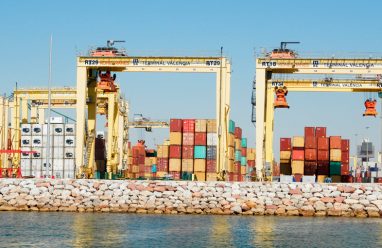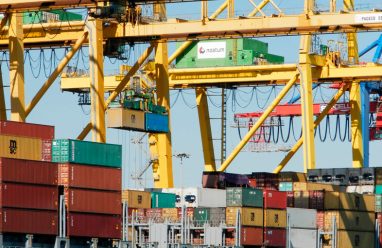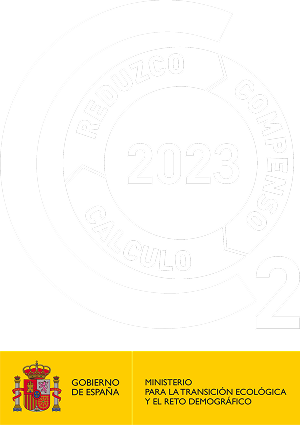The underlying goal of the MASPORT project was to advance decisively on the acquired knowledge and application of automation and simulation methodologies. Such advances helped resolve maritime-terrestrial bottlenecks whilst improving the capacity, performance and service level of port container terminals (PCTs). The objective of making PCTs serve as nodal infrastructure has direct repercussions on the logistics and linear infrastructure that make up the supply chain of containers. This in turn fosters intermodality, competitiveness and the efficiency of the transport system.
The strategy was broken down into five objectives to be set and fulfilled for both pilot terminals belonging to the consortium.
- Identify the bottlenecks of PCTs as nodal systems within the port logistics chain of containers;
- Analyse the viability of implementing technological (automation) and management innovations in PCTs;
- Measure the performance, capacity and service levels offered by PCTs (segmented and disintegrated vision);
- Personalise the Balanced Scorecard tool for PCTs (dynamic, integral and integrated vision);
- Develop and apply the simulation tool for PCTs (dynamic, integral and integrated vision).
Obtained results included on the one hand the development of tools to improve the management of container terminals (Balanced Scorecard and simulator) and on the other hand the drafting of documents and a state-of-the-art analysis related to the objectives of the project.
A methodology was developed to apply the Balanced Scorecard approach to both terminals of the group. This tool is based on a fully integrated and integral measurement system formed by a series of indicators that capture the operation of a PCT in different demand (maritime and terrestrial transport) and infrastructure and equipment scenarios.
Balanced Scorecard Proposal for TCV and MSC
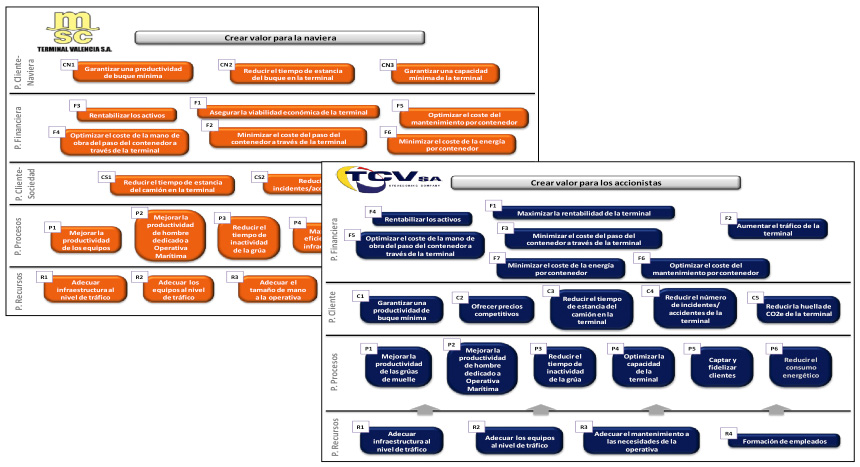
To this effect a simulation tool as well as the models of both terminals were designed. The simulator made it possible to test for different strategic, tactical and operational time frames the various planning and operational alternatives of PCTs. The simulator is composed of a series of models that describe the behaviour and operation of the various elements that form PCTs, editors that make it possible to detail the characteristics of the terminal under study, the nucleus of the simulator that solves experiments, an optimisation tool to assess the best operational conditions based on specific indicators, and a few more models. These include models that allow visualising the simulation and its results, the communications system between processes and the design, loading and verification of databases storing information.
The simulator can work with different levels of abstraction, allowing it to reproduce the behaviour of the system to different degrees of detail in accordance with the simulation needs of the scenario under study (the goal of the simulation and response time) and the availability of information. Normally the effort needed to develop and validate a model increases in function of the level of detail. Likewise, the more complicated and detailed a model is, the greater the computing need, which can limit its use if not capable of giving a response in an acceptable time frame. Obtaining the necessary information to validate and support a model with a high level of detail can also be very costly and difficult to obtain, both in terms of time and in economic terms.
Simulation of the Terminal Yard Layout
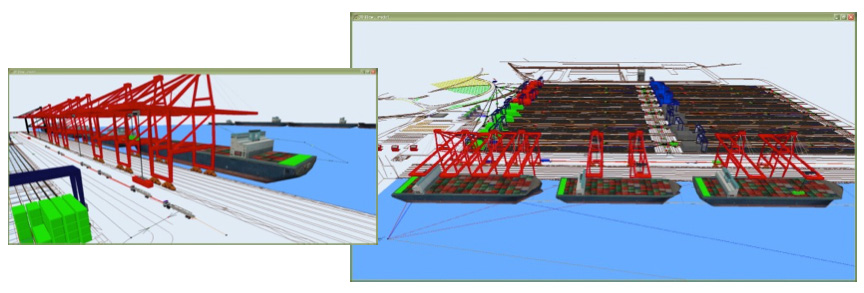
Delving deeper in the study of performance, capacity and service level indicators resulted in the publication of a second monograph entitled “Port Capacity Manual: Application to Container Terminals” (available in digital format in English and Spanish).
Finally, the identification of bottle necks and of improvement opportunities in port terminals served as a feedback mechanism for the work carried out by the simulator as well as for the state-of-the-art analysis of technological and management innovations in PCTs, leading to the publication of a third monograph linked to the project entitled “Technological and Management Innovations in Port Container Terminals” (see page 106).
Apart from these monographs the results of the project were also disseminated through more than 20 different publications in both Spanish and international seminars and congresses like the Ad Hoc Expert Meeting on Assessing Port Performance of the UNCTAD.

